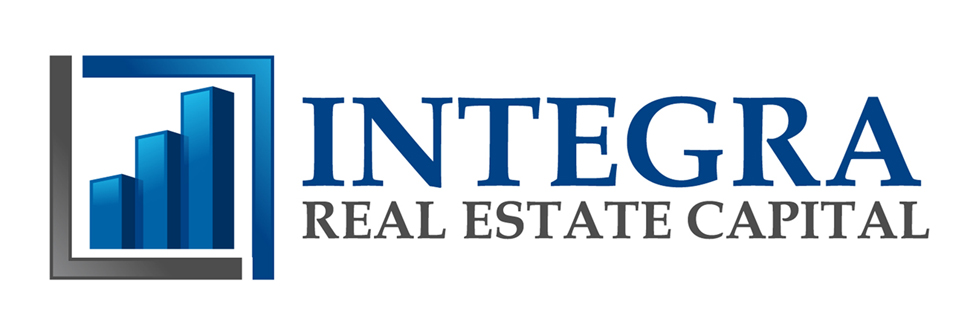CMBS Lenders
Conduit lending secures long-term, non-recourse financing with fixed rates and higher leverage for income-producing commercial real estate.
Since 2013, Integra has been helping real estate owners achieve financial success.
Get access to competitive CMBS financing and improve the ROI of your portfolio with speed and certainty.
Customized CMBS loan options for acquisitions and refinance of commercial and multifamily properties.
At first glance
CMBS Lenders Explained: A Powerful Tool for Real Estate Financing
Commercial Mortgage-Backed Securities (CMBS) lenders offer a unique avenue for securing long-term, fixed-rate financing backed by income-generating commercial real estate. Ideal for stabilized assets, CMBS loans are structured to meet the needs of borrowers seeking non-recourse terms, competitive interest rates, and higher leverage.
These loans are commonly used for retail centers, office buildings, industrial properties, and multifamily assets. CMBS lenders evaluate deals primarily on property performance and market fundamentals, providing borrowers with predictable capital solutions while transferring loan risk to bond investors through securitization.
» KEY BENEFITS:
✅ Long-Term Fixed Rates (5-10 Years) – Reduces exposure to rate volatility.
✅ Interest-Only Loan Options – Improve early-term cash flow and boost returns.
✅ Cash-Out Refinance – Extract equity to fund new acqusitions or renovations.
✅ Nationwide Lending Footprint – Loans offered in primary and secondary markets.
CMBS Financing Solutions in 3 Easy Steps
🚀 Fast, no obligation quotes.

1. SUBMIT PROPERTY DETAILS
Start by sharing key information about your commercial asset – location, occupancy, income, and loan amount needed. You can call us directly at (212) 353-2800

2. SELECT BEST LOAN OPTION
You’ll receive term sheets outlining rates, structure, and leverage options. Compare all of the pre-approved offers.
3. CLOSE WITH CONFIDENCE
Once terms are accepted, the deal moves to underwriting, diligence and closing—typically within 30–60 days. We guide you through every step to ensure a smooth, transparent process.
Ready to Scale? Discover What CMBS Financing Can Do for You.
What Are CMBS Lenders?
CMBS lenders are financial institutions or entities that originate commercial real estate loans, bundle them into pools, and sell them as securities to investors. Think of them as the architects of a complex funding ecosystem.
Unlike traditional banks that keep loans on their books, CMBS lenders offload the risk by securitizing these mortgages—turning them into bonds traded on the secondary market. The result? Billions in liquidity for office buildings, shopping centers, multifamily and industrial properties, all while investors bet on the cash flow from your lease payments.

Explosive Growth in 2024
CMBS issuance soared to $42.29 billion in the first half of 2024, nearly tripling the $16.47 billion from the same period in 2023. This 248% surge signals a roaring comeback for CMBS lenders, driven by CRE financing demand.
How CMBS Lenders Work
Commercial Mortgage-Backed Securities (CMBS) lending involves a sequence of stages, each with distinct processes and stakeholders. In the first stage, a loan is originated (underwritten and funded) by a conduit lender.
Next, the lender securitizes the loan – bundling it into a pool with other loans and selling bonds backed by those mortgages.
Finally, the loans enter servicing, where specialized servicers administer the loans over their life until repayment or resolution.
↓ Below is a detailed look at each of these stages:
1. Loan Origination
Underwriting by CMBS Lenders: In CMBS lending, borrowers obtain financing from conduit lenders—typically investment banks or finance companies—who originate loans specifically for securitization.
Unlike traditional portfolio lenders that hold loans, conduit lenders sell them into a CMBS trust, allowing for more aggressive terms like higher leverage and non-recourse structure (where the lender’s claim is limited to the property, barring fraud or misconduct). Loans are usually fixed-rate, structured over 10 years with 25–30-year amortization and may include interest-only periods, ending with a balloon payment.
To protect investors, CMBS loans include prepayment restrictions, often requiring defeasance—a complex process that replaces loan collateral with Treasury securities if paid off early. These standardized, investor-focused terms contrast with the flexibility of traditional loans, making CMBS origination uniquely suited for the capital markets.
Underwriting & Key Metrics:
CMBS lenders focus underwriting on the property’s income and value, rather than the borrower’s credit or financial strength. Since the loan is sold to investors, the asset’s performance is key. Lenders evaluate property financials, market conditions, and tenant quality to assess risk. Three core metrics guide this process:
Loan-to-Value (LTV):
Debt Service Coverage Ratio (DSCR):
Debt Yield:
In addition to these quantitative metrics, CMBS lenders consider qualitative factors such as property type, location/market strength, and tenant quality. Certain property types carry higher risk – for instance, hotels or specialty use properties are underwritten more conservatively than apartments or industrial, especially if economic conditions are uncertain.
2. Securitization
Pooling Loans into CMBS Bonds: After the loan is closed, it is pooled with other similar loans and transferred into a Real Estate Mortgage Investment Conduit (REMIC). From there, bonds backed by these loans are issued to institutional investors. The loan pool is sliced into “tranches” with different levels of risk and return:
- Senior tranches (AAA-rated) get paid first with the lowest risk.
- Subordinate tranches absorb losses first but offer higher yields.
Borrowers continue making payments to a master servicer, who distributes funds to investors based on the bond structure.
3. Loan Servicing
Master and Special Servicers: After securitization, the ongoing administration of the loans is handled by servicers appointed under the Pooling and Servicing Agreement (PSA). Borrowers no longer interact with the original lender; instead, they make payments and requests through the servicers. There are two main servicing roles in CMBS:
- Master Servicer: Manages payment collection, escrows, and reporting. The master servicer is responsible for the day-to-day management of each loan as long as it is performing (current on payments).
- Special Servicer: Takes over if the loan becomes delinquent or if a default is imminent. The special servicer’s role is to step in when there is a problem – they have the authority to work out a solution or otherwise resolve the loan on behalf of the CMBS trust. It is important to note that the special servicers prioritize bondholders’ interests and are less flexible than typical lenders.
In summary, CMBS lending follows a three-stage process: origination, where loans are underwritten and structured for sale; securitization, where loans are pooled into REMICs and sold as bonds; and servicing, where master and special servicers manage payments and workouts.
Did You Know?
Benefits of Working with CMBS Lenders
Why choose CMBS over a local bank? Here’s why savvy developers swear by it:
- Non-Recourse Protection: One of the most compelling benefits is the non-recourse loan structure—meaning you’re not personally on the hook if the deal goes sideways. This shields your personal assets and enables strategic risk-taking on high-potential properties without overexposure.
- Funding Capacity: Need $50 million—or more—for a stabilized retail center, hotel, or multifamily property? CMBS lenders specialize in large-scale deals that often exceed the comfort zone of traditional banks. Their institutional capital sources can support complex transactions with ease and consistency.
- Competitive Fixed Rates: CMBS loans typically offer fixed interest rates that rival or outperform floating-rate alternatives—especially valuable in volatile or rising rate environments. Locking in predictable debt service for 5 to 10 years helps protect margins and stabilize long-term projections.
- Speed & Scalability: With experienced teams and standardized processes, CMBS lenders can move quickly—often closing in 30 to 60 days. Whether you’re refinancing a portfolio, acquiring a trophy asset, or recapitalizing a performing property, the structure supports deals at scale.
- Built-In Market Liquidity: Because CMBS loans are packaged and sold as securities, lenders remain motivated to deploy capital—even when traditional banks pull back. This securitization model fuels lending activity through cycles, giving borrowers access to capital when others hit pause.
Imagine snagging a $30 million retail center loan with a 5 or 10-year full-term interest-only and no personal guarantee – CMBS makes that possible.
Drawbacks of CMBS Lenders
While CMBS loans offer attractive terms for stabilized assets, they come with trade-offs that every investor should weigh carefully.
- Rigid prepayment structures – often involving defeasance or yield maintenance—can make early exits painfully expensive, sometimes costing hundreds of thousands in penalties if you sell or refinance before maturity.
- Post-Closing: In times of distress, special servicers control the workout process—and unlike traditional banks, they’re not known for flexibility. If tenants vacate and cash flow drops, you may face an unyielding loan servicer.
- Market Volatility: CMBS lending is highly sensitive to market cycles; during the 2008 financial crisis, issuance volume plummeted by 80% (CRE Finance Council), and a similar economic downturn could easily tighten capital access again.
- Less Flexibility: Don’t count on making changes mid-loan—modifications are rarely granted, as servicers are legally bound to protect bondholders, not borrowers.
Weigh all options to make sure a CMBS loan is right for your real estate portfolio’s long term goal.
Who Uses CMBS Lenders?
CMBS lenders are commonly used by commercial real estate owners and investors seeking long-term, fixed-rate financing for stabilized, income-producing properties. These borrowers range from institutional asset managers, private equity firms to seasoned developers and middle-market owners of commercial real estate portfolios.
CMBS loans are especially attractive to those acquiring or refinancing retail centers, office buildings, industrial assets, hospitality properties, and multifamily complexes that have strong cash flow and proven tenancy. CMBS lenders provide a scalable financing solution that aligns well with long-term investment strategies.
Quick Facts
75% of CMBS loans in 2024 were for stabilized retail, multifamily, and office properties.
Top CMBS Lenders to Know
When it comes to securing institutional-grade financing for stabilized commercial properties, knowing the top CMBS lenders can give CRE owners and investors a distinct advantage. These lenders—often large investment banks, conduit lenders, or specialty finance firms—have the scale, underwriting expertise, and securitization channels to offer long-term, fixed-rate, non-recourse loans tailored for income-producing assets.
Some of the leading names in the space include Goldman Sachs, JPMorgan Chase, Deutsche Bank, KeyBank, and Wells Fargo, each known for competitive terms and deep market reach. Working with a top-tier CMBS lender not only enhances your ability to secure favorable loan structures but also signals credibility to the market and capital partners.
Understanding who these players are—and what types of deals they prefer—can streamline your financing process and maximize the value of your commercial real estate portfolio.
Compare Lenders & Terms
Not all financing options are equal. Compare interest rates, repayment schedules, fees, and approval timeframes to find the best fit for your property.
GENERAL CMBS LOAN TERMS
Loan Amount: $3,000,000 mimimum, no maximum
Locations: Primary, secondary and tertiary markets across U.S.
Property Types: Multifamily, Office, Retail, Industrial, Hotel, Self-Storage, Mobile Home Parks & Student Housing
Maximum LTV: Up to 75%
Loan Term: 5, 7 and 10 year fixed-rate terms
Amortization: Up to 30-Years, with interest-only options available
Recourse: Non-recourse, with the exception of industry standard “bad boy” carve outs
Prepayment: Defeasance or Yield Maintenance
Minimum DSCR: Minimum 1.25x DSCR on underwritten net cash flow. Mezzanine debt can be permitted up to a 1.10x DSCR
Reserves: Generally Tax, Insurance and Replacement Reserves required
Assumability: Available with lender approval in most cases
Borrowing Entity: Single asset or special purpose entity required depending on loan size
Sponsor (Borrower): Creditworthy individual(s) or entity acceptable to Lender with sufficient liquidity and net worth
Closing Time: Generally 30-45 days from the date of signed application.
Pricing: Competitive tiered pricing based on LTV, DSCR and Debt Yield.
What Are CMBS Lenders?
CMBS lenders are financial institutions or entities that originate commercial real estate loans, bundle them into pools, and sell them as securities to investors. Think of them as the architects of a complex funding ecosystem.
Unlike traditional banks that keep loans on their books, CMBS lenders offload the risk by securitizing these mortgages—turning them into bonds traded on the secondary market. The result? Billions in liquidity for office buildings, shopping centers, multifamily and industrial properties, all while investors bet on the cash flow from your lease payments.
CMBS Lenders FAQs
What’s the difference between CMBS and traditional bank loans?
CMBS loans are securitized and sold to investors, offering non-recourse terms and larger amounts. Bank loans stay on the lender’s books, often requiring personal guarantees and smaller limits.
How long does it take to get a CMBS loan?
Typically 30-60 days, depending on due diligence—faster than some banks but slower than hard money lenders.
Can I prepay a CMBS loan?
Yes, but it’s costly. Defeasance (replacing the loan with bonds) or yield maintenance fees can run into six figures.
Are CMBS loans good for small businesses?
Not usually. They’re built for big projects ($5M+). Small businesses might lean toward SBA loans instead.
What types of properties qualify for CMBS loans?
CMBS lenders typically finance stabilized commercial assets such as retail centers, office buildings, industrial properties, hospitality, and multifamily housing. The property must generate consistent cash flow and meet specific debt service coverage requirements.
ABOUT INTEGRA
Integra is a trusted commercial mortgage brokerage committed to helping real estate investors secure the financing they need to grow. We specialize in connecting clients with tailored loan solutions for acquisitions, refinances, construction, and bridge financing. With expert guidance at every stage, Integra ensures a smooth and strategic path to funding your next commercial real estate opportunity.

25+ Years of Experience
Dedicated Support Team

Access to Wide Network of Lenders


